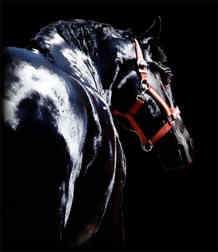
Introduction
Horse owners are responsible for the well being of their animals. It is important to understand how horses’ minds work and what constitutes normal ranges of behaviour in order to create the most suitable environment for them. As humans we tend to anthropomorphize, but this deters us from making correct assessments of the horse’s needs and creates unnecessary stress for the horse. We humans find comfort in staying in small confined spaces, and often have difficulty in understanding why horses are rarely happy when confined to stables and small yards.
The practice of stabling horses has been carried out for almost as long as horses have been domesticated. This has generally been for the benefit of the owner or trainer. The horse is close at hand and a close eye can be kept on him. His diet can be correctly measured and the exercise he receives can also be kept under control.
The horse that is just used for pleasure is stabled because it is thought to be "the right thing"; the sport horse is stabled because of the owner’s needs to control so much of his life. Horses have always been kept in stables and it is now thought that they prefer being stabled rather than out in the cold wet weather. But does the horse like being in a stable?
Welfare is measured in two ways. The first is the health of the horse. Should we put the health of a horse at risk by putting him in a stable? The second is the behavioural aspect of stabling horses, where the horse is unable to do what is natural, and stereotypies show that the horse is not happy with the situation that he is in.
This is a study to collect together the research that has been carried out on the health problems that occur in stabled horses, stereotypies in horses and the horse’s natural behaviours.